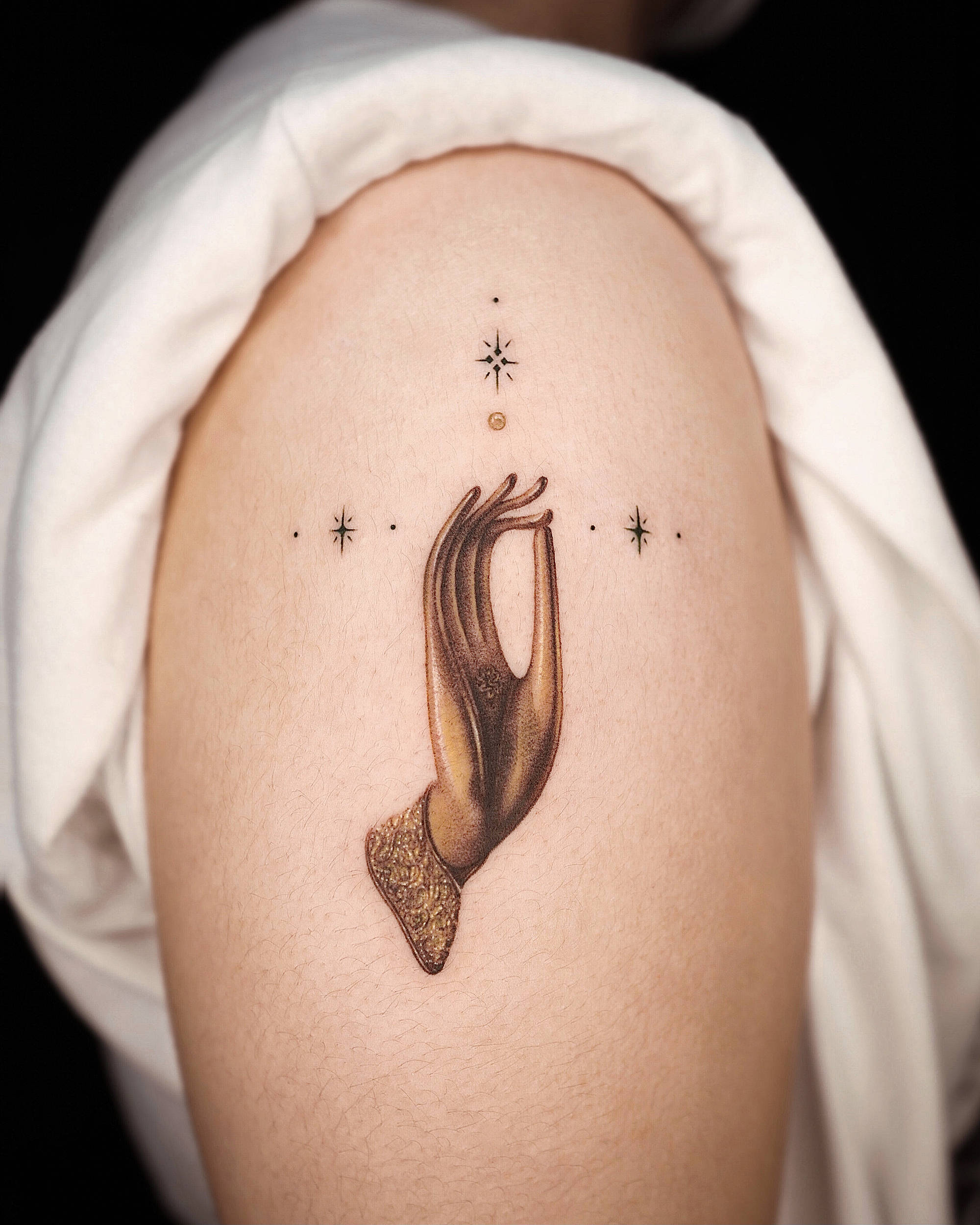
Before becoming a tattooist, Rizn exhibited installation art and painted professionally for over six years. This knowledge has aided her in launching a tattooing career. And unconcerned that she has a few years of tattooing experience since her enthusiasm for the arts is sufficient to propel her forward. Rizn is also interested in establishing a stable atmosphere for her customers. “I want to be a tattooer who is satisfied with the final result of tattooing and the entire process,” she stated. You may read more of this interview below.
Above: Customers of Rizn often desire a Buddha hand tattoo.
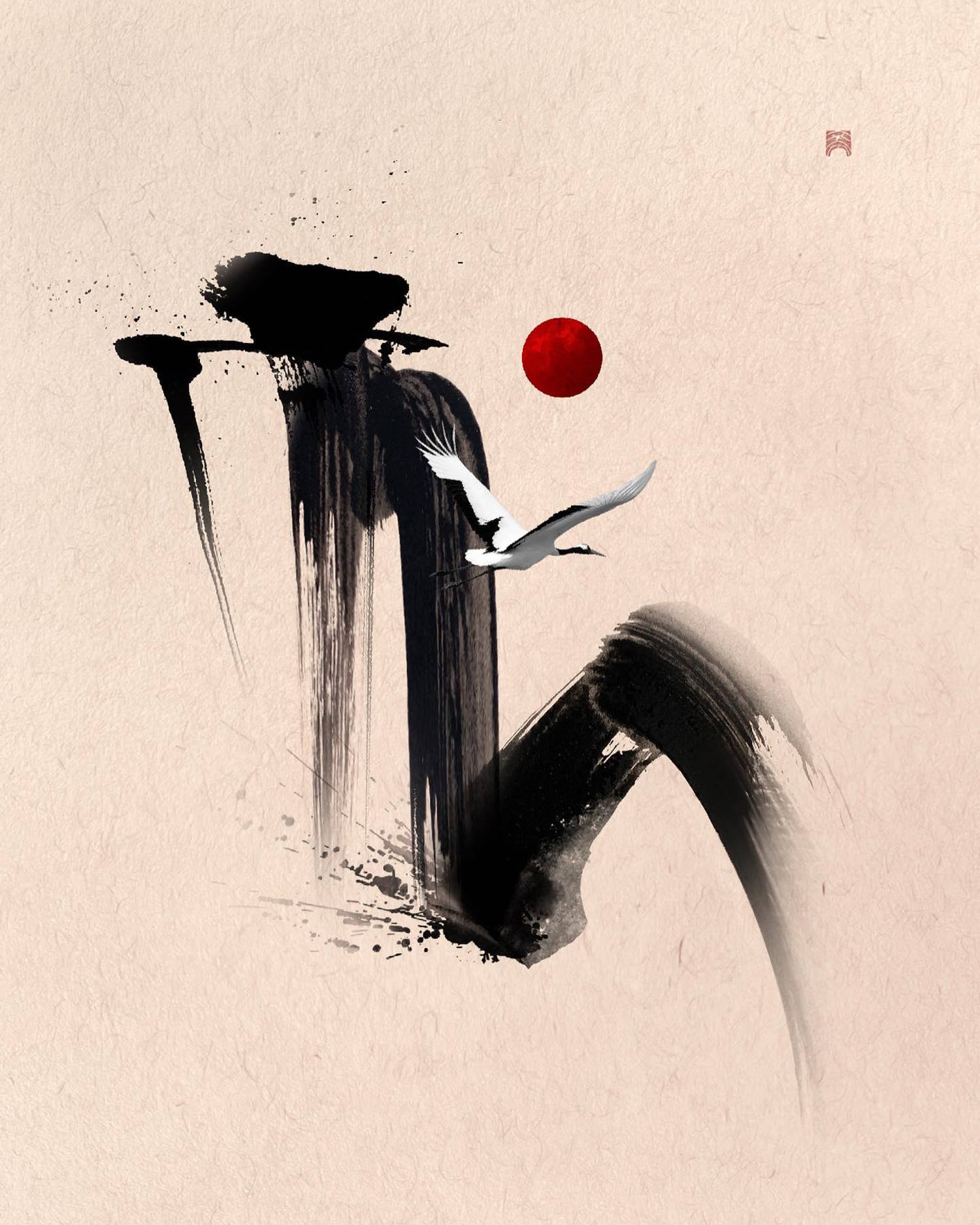
One of Rizn’s digital (ink-wash-like) sketches.
Your tattoo work has a painterly texture. Do your paintings influence it before becoming a tattooer or other?
Yes, it is reflected in my painting style. Painting and tattooing are the same artwork performed with different tools, so it is only natural that they exhibit consistency. For me, ink is a well-known expressive medium. Starting with hand-drawn calligraphy, I progressed to ink-wash paintings such as “literati” and landscape art. To draw even one line, I can feel the sensitive and flexible movements, the strong dynamism, the charm of the brushstrokes, and the refined color gradients. I believe the charm increases when the Oriental paintings are tattooed on the body.
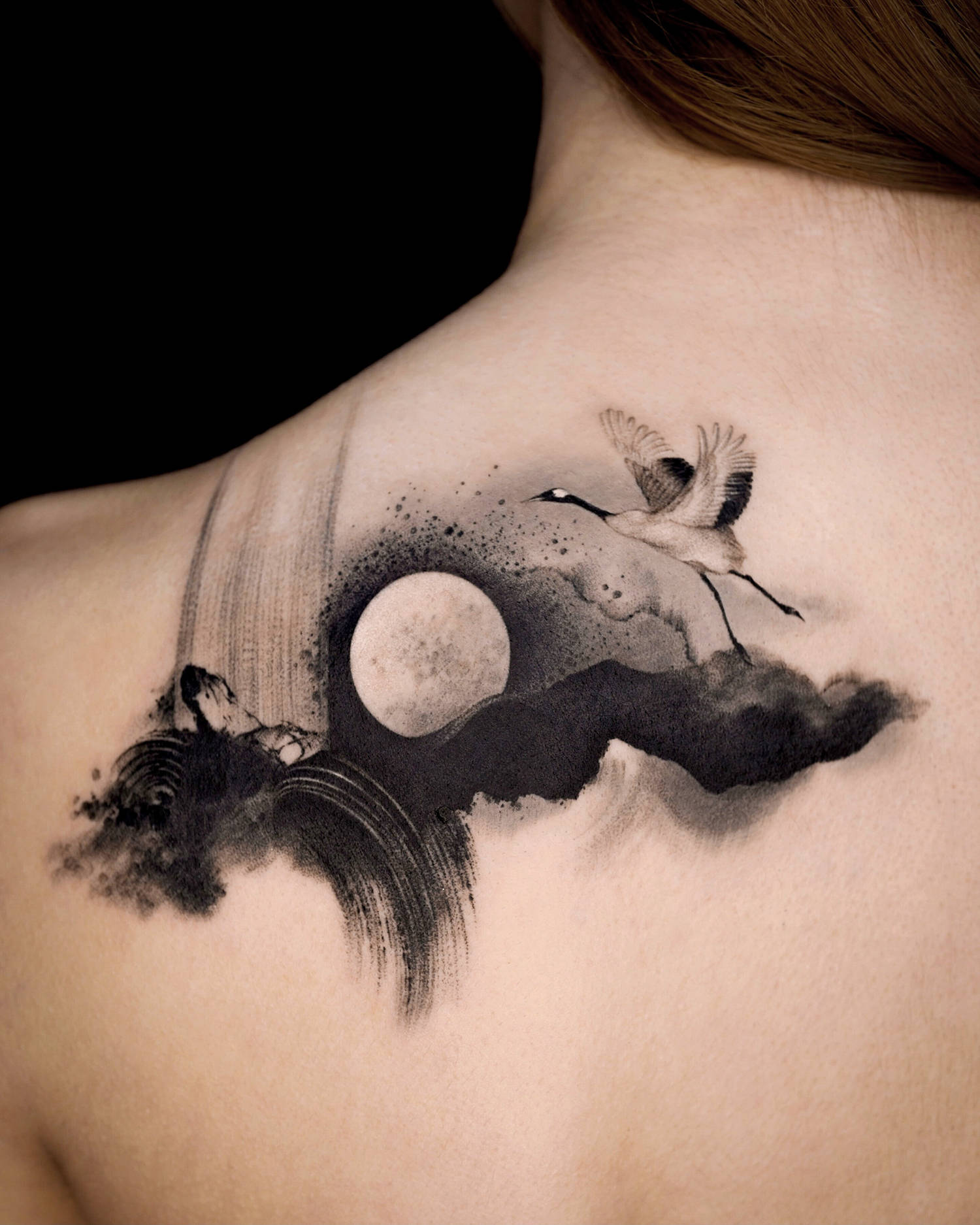
An Asian-style tattoo with a painterly aesthetic.
Please explain how you prepare the work, whether it is created digitally on an iPad or by hand on paper.
It varies. I always start with a sketch before moving on to the main work. If it’s a realistic image, I finish it in Adobe Photoshop and Illustrator with photo materials. I use the physical materials I’ve saved when a design calls for brushstroke or ink effects (i.e., I regularly create ink textures on paper, carefully controlling the brushstroke speed and water density). I occasionally develop designs without digitally scanning them, based solely on my traditional “literati” and calligraphy works.
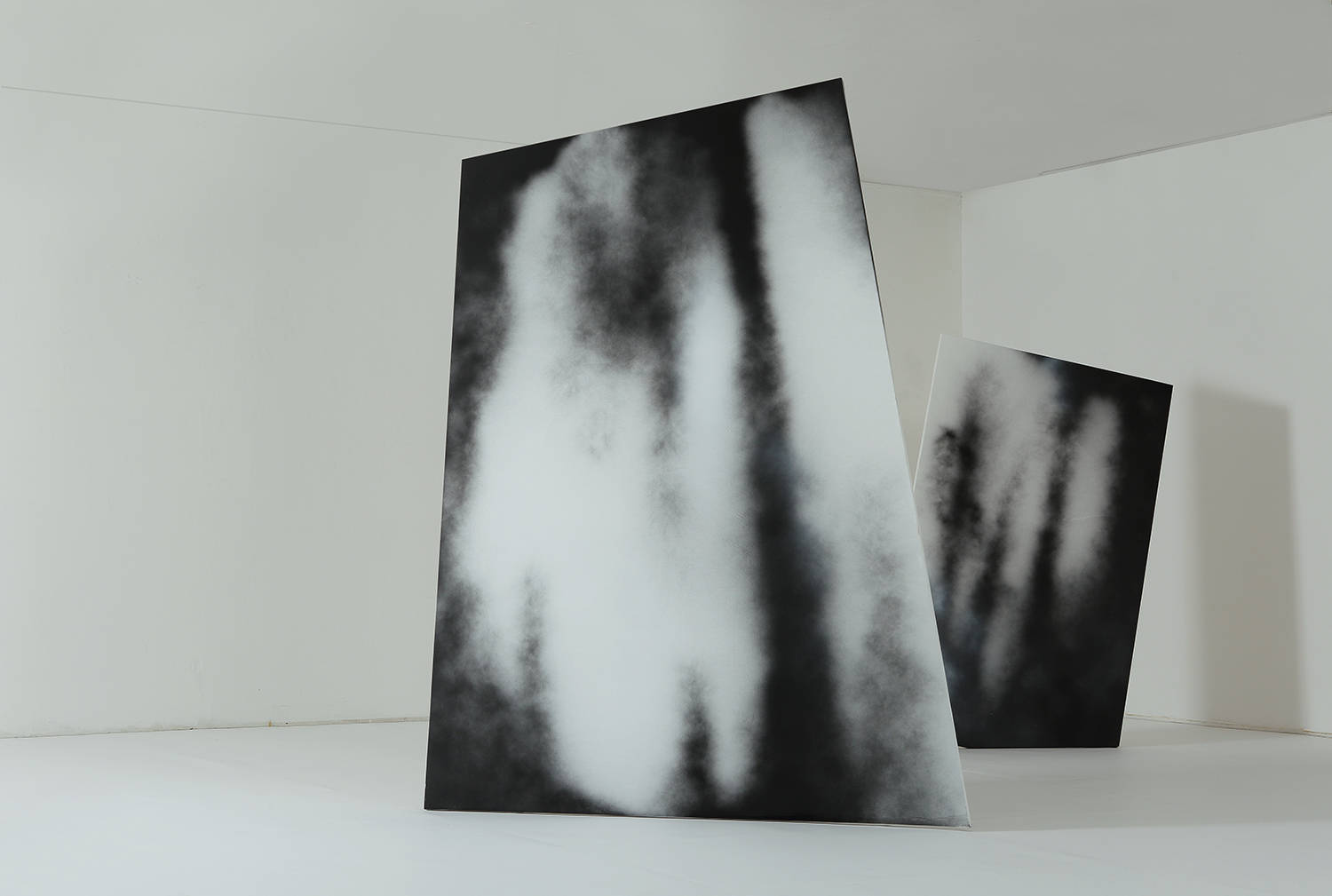
An art installation from Rizn’s previous career phase.
You have done installation art and paintings, yet inking on the body has more responsibility. Given that you are still new to tattooing, are you not concerned with how the tattoos will look over time?
First, I’d like to clarify that the “number of years of work” is simply a number. Some people copy tattoo designs even after years of practice, whereas others are dedicated to their work and have extensive experience after only a few years of practice. I’ve seen many people fall into the first category, and I try to be aware of it as a tattooist. This is the attitude that has allowed my abilities to progress this far. The insatiable desire to learn and grow has aided in growth acceleration. And, despite having only a few years of experience, I am confident in many areas, including color development, tattoo work, and camera skills.
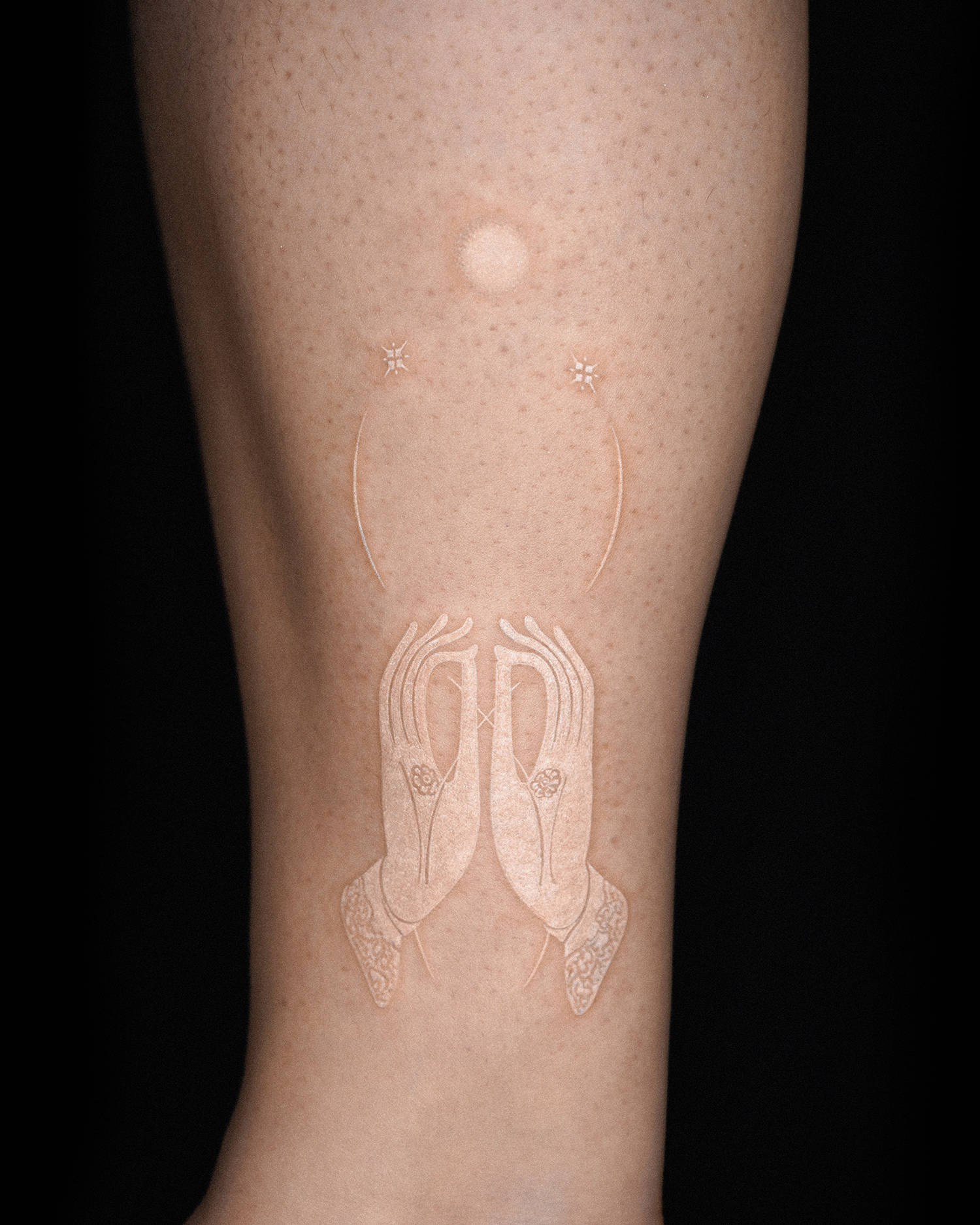
Buddha’s hands in delicate white ink.
Which tattoo topics do you like to emphasize?
I believe that depends a lot on the clients. Tattooing is not a tool to only satisfy my creative desires. It is more like “directing” with the topic the clients provided me with and demonstrating my competency as much as I can. My signature works have been born in that way too. Because the clients recognized my strengths first, I established an identity of my work.
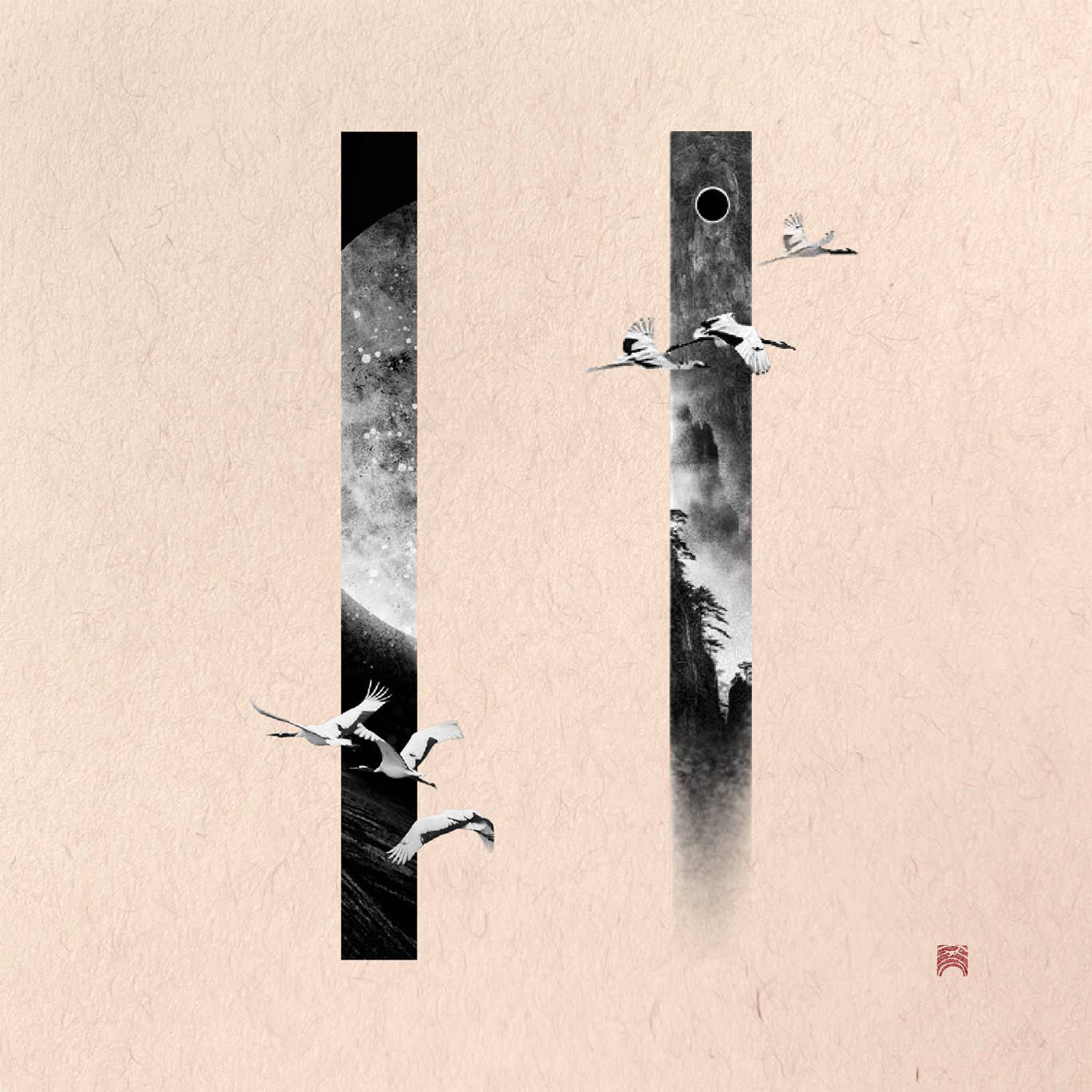
As a concept for a digital tattoo, this picture resembles a scroll painting.
Specific East Asian paintings or artists have influenced your work.
They aren’t paintings, but an Oriental art theory inspires them. It is known as the “Six Principles” by Xie He. He was a painter and art theorist who developed six criteria for evaluating ancient paintings. My favorite of the six laws is the “Qiyun Shengdong.” Because it expresses being intellectually alive, it is the central concept in Oriental paintings. Even now, when I’m working on tattoos, I think of “Qiyun Shengdong.”
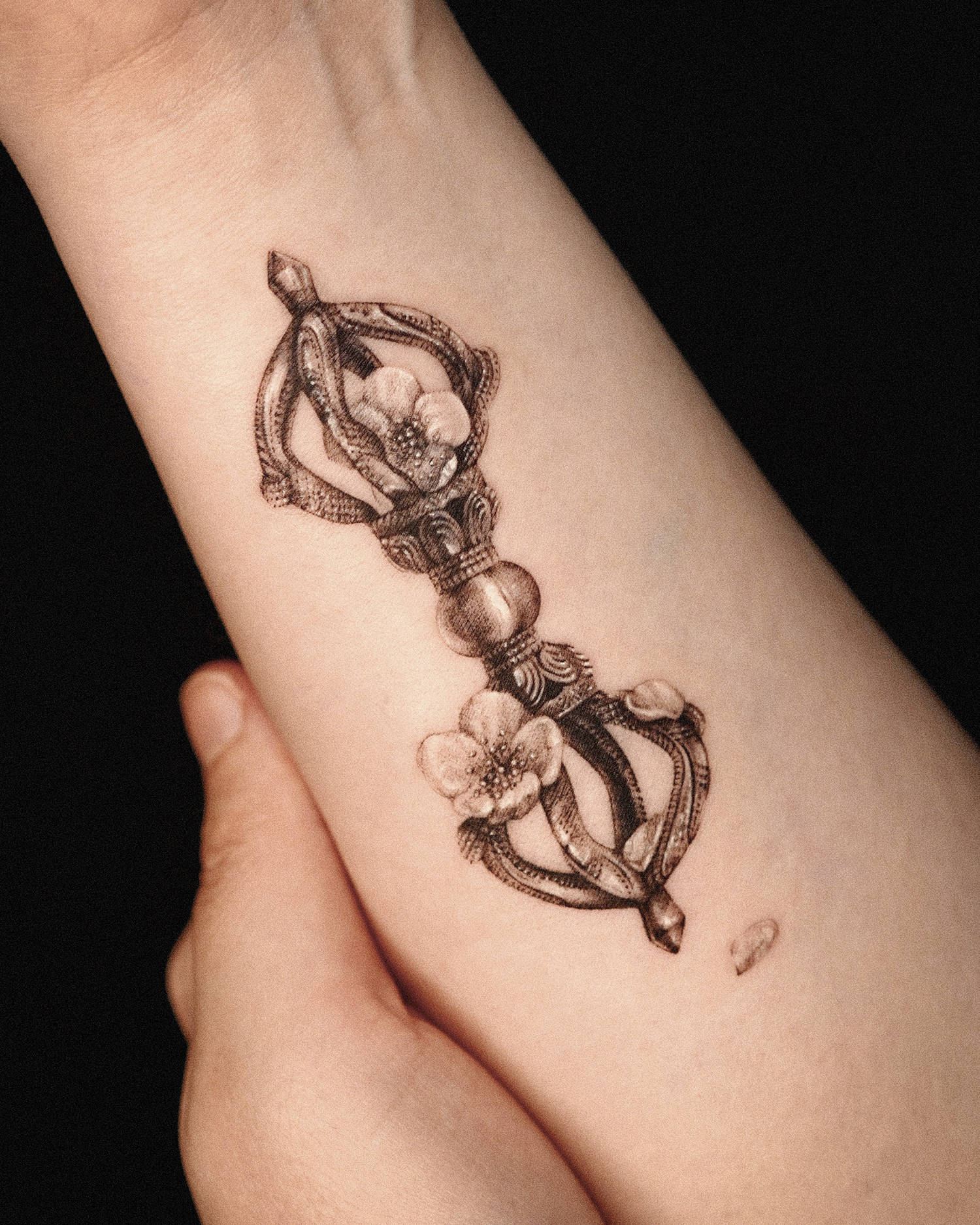
A “Vajra,” a holy instrument, is often associated with the diamond and the lightning bolt.
You’ve received a lot of interest from US viewers on Instagram; do you hope to tattoo in America one day? If so, which city?
I can’t express how grateful I am for their interest. I get a lot of emails from my US followers, and I look forward to someday having the opportunity to work in America, particularly in New York.
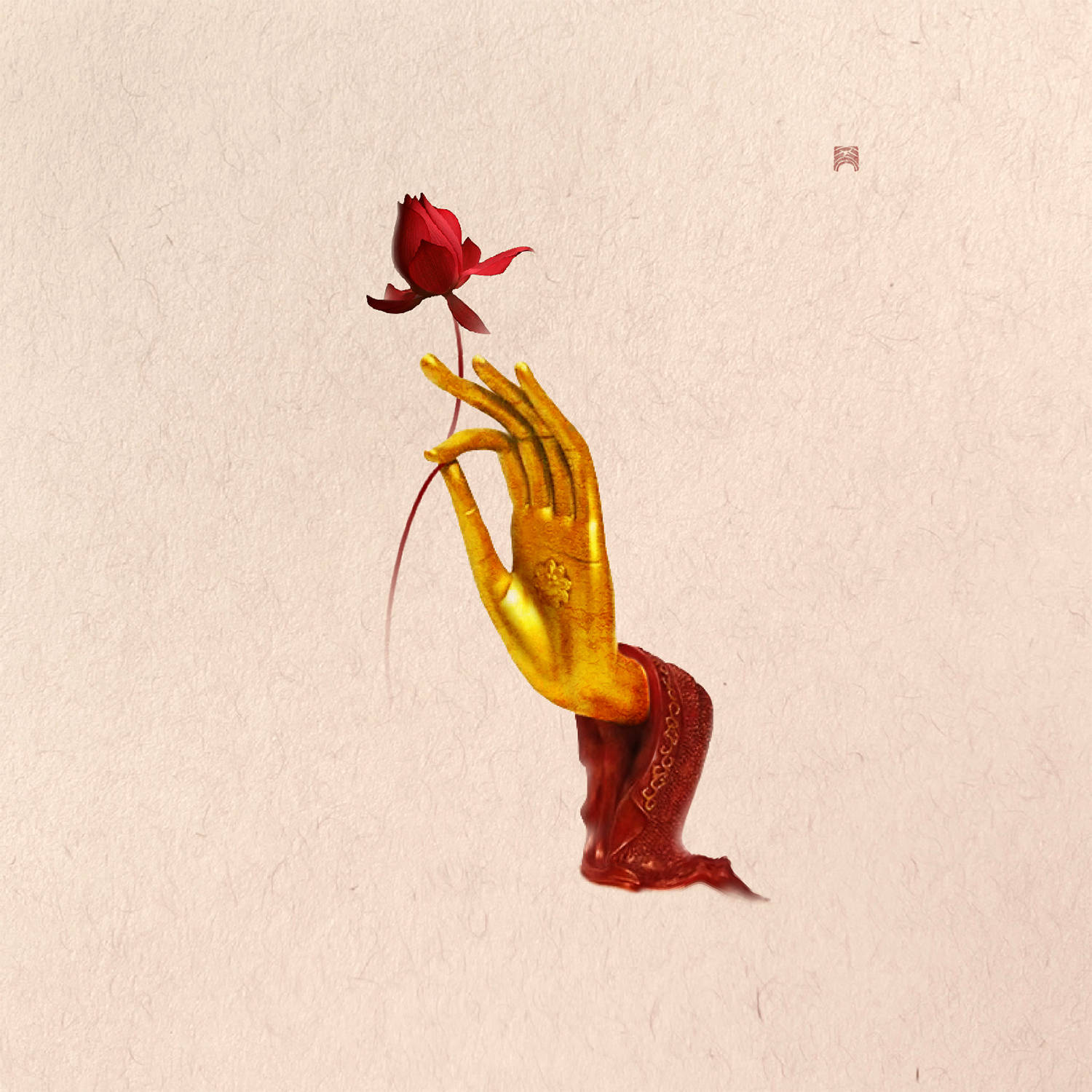
Red and gold are often associated with wealth and prosperity.
Lastly, do you have tattoos on you?
Miki Kim, a tattoo artist, did my first tattoo. I’ve admired her for a long time and consider her to be one of my role models. Before entering the industry, I traveled to Seoul to have her tattoo me. It wasn’t so much that I wanted a specific tattoo design as I wanted to meet her in person. Back then, I had a lot of ideas about what kind of tattoo artist I wanted to be, what direction I should take with my work, and what kind of attitude and determination I should have toward tattoos. She was as professional as I had expected. She was someone I looked up to and who had a big influence on me. Looking at the tattoo, I got back then (an origami-related image) reminds me of my pure passion when I first started tattooing.
Photos © Rizn
